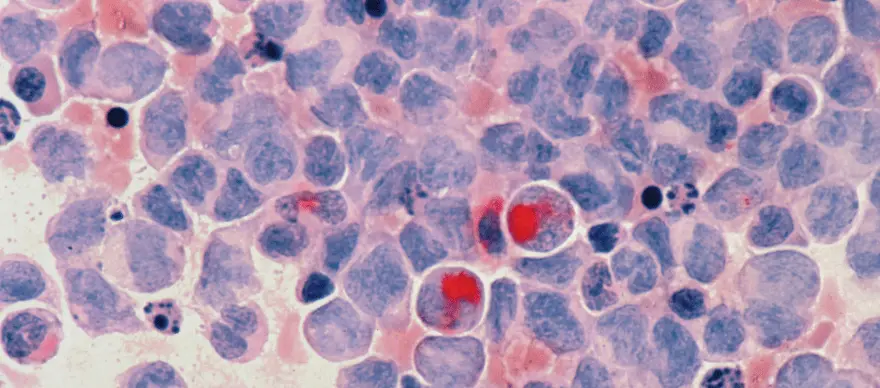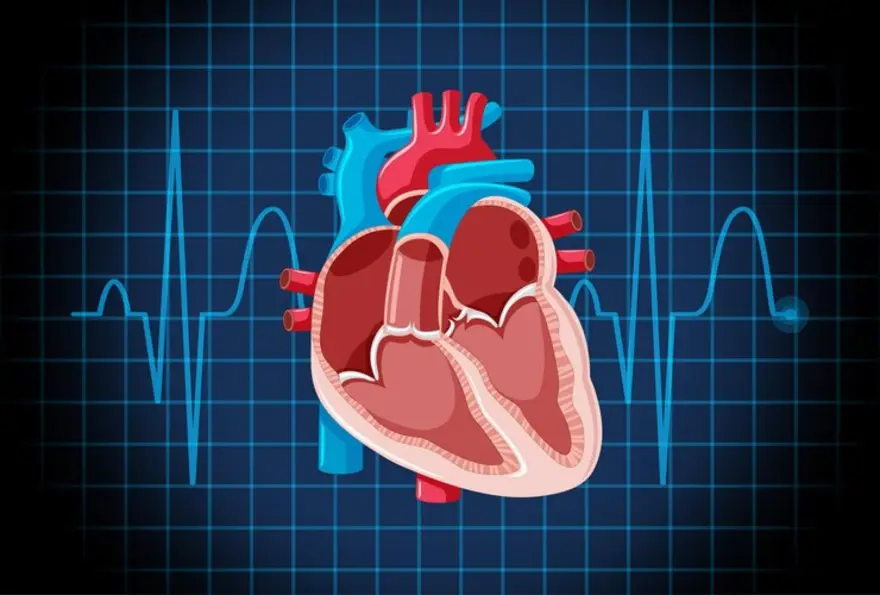Health Wellness
Learn About Acute Myeloid Leukaemia
3136 Views
0

Acute myeloid leukaemia (AML) is a type of blood cancer that starts in the bone marrow or the soft, internal section of a bone. As a vital part of the skeletal system, the bone marrow or soft tissue within the bones produces three types of blood cells: platelets, white blood cells, and red blood cells.
White blood cells help the body fight infections, but in people with AML, these white blood cells fail to grow properly and subsequently transform into cancer cells called myeloid blasts. These then move from the bone marrow into the bloodstream, affecting various other body parts.
If acute myeloid leukaemia symptoms are left untreated, the cancer can spread to the brain, lymph nodes, liver, spleen, skin, and cerebral spinal fluid.
Symptoms of Acute Myeloid Leukaemia
There are different stages of acute myeloid leukaemia:
- M0: Undifferentiated AML
- M1: AML that is less mature
- M2: AML that is more mature
- M3: APL or acute promyelocytic leukaemia
- M4 EOS: Acute myelomonocytic leukaemia with eosinophilia
- M5: Acute monocytic leukaemia
- M6: Acute erythroid leukaemia
- M7: Acute megakaryoblastic leukaemia
In its early stages, the signs of acute myeloid leukaemia can be the same as flu, and you might suffer from fatigue and fever. Other common symptoms of AML include:
- Frequent nosebleeds
- Bone pain
- Easy bruising
- Swollen and bleeding gums
- Shortness of breath
- Excessive sweating, especially at night
- Unexplained weight loss
- Fatigue
- Fever
- Heavier than normal periods in women
- Headaches
- Dizziness
- Weakness
- Feeling cold all the time
- Joint pain
- Vomiting
Schedule an acute leukaemia panel or a bone marrow test today to ensure you can prevent or diagnose, manage and treat acute myeloid leukaemia.
Causes of Acute Myeloid Leukaemia
The main cause of acute myeloid leukaemia is DNA mutations in the bone marrow's stem cells. These mutations cause the stem cells to produce more white blood cells. Since these cells are immature, they do not have infection-fighting capabilities. As they keep increasing in number, the platelets and red blood cells decrease in number, resulting in the onset of acute myeloid leukaemia.
Doctors do not know what triggers the genetic stem cell mutations and why certain people suffer from this condition. But certain factors might increase your risk of developing this condition. These risk factors include the following:
- Being exposed to radiation of a considerable level can increase your risk of developing AML. But this usually requires exposure at the highest levels. As such, people who have undertaken radiotherapy as part of previous cancer treatment have higher chances of contacting AML.
- Exposure to chemicals like benzene can also increase your chances of getting AML. Benzene is commonly found in the rubber industry, petrol, and cigarette smoke, so doctors recommend quitting smoking to avoid developing AML.
- The ingestion of certain chemotherapy medicines for an earlier, unrelated cancer can also increase your chances of developing AML, even after several years have passed since the treatment. These medicines include mitoxantrone, melphalan, cyclophosphamide, and doxorubicin.
- Individuals suffering from blood disorders like myelofibrosis, myelodysplasia, and polycythemia vera are at an increased risk of developing AML.
- Genetic conditions like Fanconi's anaemia, Down's syndrome, Li-Fraumeni syndrome, and neurofibromatosis type 1 can also increase a person’s chances of developing acute myeloid leukaemia.
- Genetic predispositions can also cause AML.
Treatment for Acute Myeloid Leukaemia
The treatment of acute myeloid leukaemia depends on factors such as the age of the patient, the subtype of the condition, the overall health of the patient, and their preferences. There are two phases of general treatment available for the condition. These are:
Remission Induction Therapy
The first phase of treatment is remission induction therapy, where the objective is to kill leukaemia cells within the blood and bone marrow. However, this generally does not wipe out all of the leukaemia cells; therefore, further treatment is needed to prevent a relapse occurring.
Consolidation Therapy
In consolidation therapy, also known as post-remission therapy or maintenance therapy, the objective is to destroy the remaining leukaemia cells, so the condition does not return.
There are different treatments used in these treatment phases, including:
- Chemotherapy: It is one of the most important types of remission induction therapy, where doctors use chemicals to kill cancer cells in the body. Chemotherapy can also be used in consolidation therapy for AML treatment. Patients must stay in the hospital during chemotherapy because the treatment destroys normal blood cells as well as the leukaemia cells. The chemotherapy can be repeated if it does not cause remission.
- Targeted therapy: This acute myeloid leukaemia treatment focuses on certain abnormalities in the cancer cells. Targeted therapy involves using drugs to block these abnormalities, causing the death of the cancer cells. A doctor might test a patient's leukaemia cells to find out if targeted therapy might be helpful for them. This therapy can either be used alone or in combination with chemotherapy.
- Bone marrow transplant: This process is also called a stem cell transplant and is used for consolidation therapy. It helps re-establish a colony of healthy stem cells by replacing unhealthy bone marrow with stem cells to regenerate healthy bone marrow. Before a bone marrow transplant, high doses of radiation therapy or chemotherapy are used to destroy the leukaemia-producing bone marrow. Next, the patient receives stem cell infusions from a compatible donor. A patient can even use their own stem cells for a transplant if they have had healthy stem cells harvested before the cancer began.
- Clinical trials: These include different types of experimental treatments and combinations of known therapies that AML patients enrol in.
- Alternative medicine: There are no alternative treatments available for AML, but certain complementary solutions can relieve the signs of this condition, such as massage, acupuncture, meditation, exercise, and relaxation activities, like tai chi and yoga.
Bottom Line
Approximately 2 out of 3 patients suffering from AML go into remission following chemotherapy. Remission means the patient does not exhibit any symptoms of the disease anymore. Patients who have yet to achieve remission fall in the acute myeloid leukaemia ICD 10 class,a medical classification for patients who have not yet achieved remission. In such patients, there are detectable cancer cells in the bone marrow, and the normal healthy cells cannot grow properly.
Visit a doctor today to schedule an acute leukaemia panel or a bone marrow test to ensure you can prevent or diagnose, manage and treat acute myeloid leukaemia.
 Home Visit
Home Visit Upload
Upload














1701259759.webp)









 WhatsApp
WhatsApp